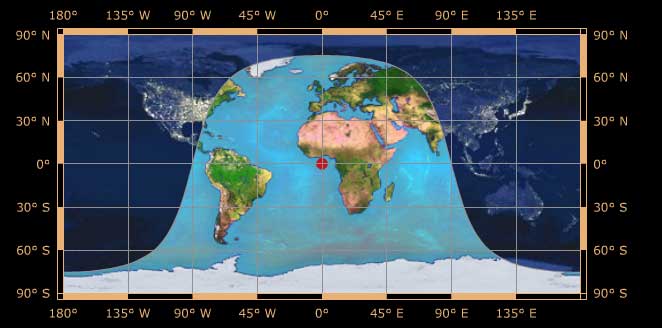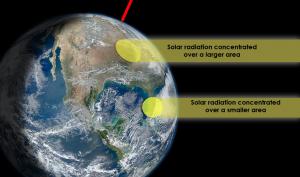How Does the Angle of the Sun's Rays and Amount of Daylight Vary?
Angle of Solar Radiation and Temperature
The angle of incoming solar radiation influences seasonal temperatures of locations at different latitudes. When the sun’s rays strike Earth’s surface near the equator, the incoming solar radiation is more direct (nearly perpendicular or closer to a 90˚ angle). Therefore, the solar radiation is concentrated over a smaller surface area, causing warmer temperatures. At higher latitudes, the angle of solar radiation is smaller, causing energy to be spread over a larger area of the surface and cooler temperatures. Because the angle of radiation varies depending on the latitude, surface temperatures on average are warmer at lower latitudes and cooler at higher latitudes (even though higher latitudes have more hours of daylight during the summer months).
The University of Nebraska’s Daylight Simulator is a simulation showing daylight and nighttime regions on Earth throughout the day and year.

Click Image to load Flash

